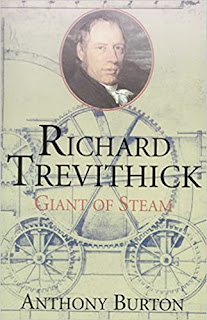All my books at these links:
Driving solo is not something I grew up doing. My teen path did not take me down automobile alley, like so many other American kids. I learned to drive only after I'd become a mom. I was a fairly timid driver for many years, but that wore off quickly after dementia began to hunt my own mother down, necessitating frequent 400+ mile round trips to southern Ohio. I drove the PA Turnpike to I-70, close to Dayton, before turning south and driving through farmland.
Going through the little burg of Enon, just south of I-70, in need of psychic help before I arrived to face whatever age-related catastrophe awaited, I'd momentarily abandon my goal and divert to the tiny residential loop of '50's houses that encircle the sacred space of a lone Adena Mound. The place still has some Mojo left, though, and a few moments of contemplating it always gave me strength.
Those earlier anxious journeys were how I learned to drive alone. As everyone knows, you've got to keep your wits about you on an interstate. Out there are all kinds of people, in vastly different mental conditions, hurtling along at the speed limit or better--mostly way better--and you have to watch your back, as well as pay attention to the road ahead. To paraphrase the old maps and their dragons: "Here there be Potholes & Folks with Anger Issues."
I went to see an old friend in Western Massachusetts recently. We usually drive a route that we've been using since we left the Northampton area. This involves driving east from Harrisburg, up I-81 into coal/fracking country, with heavy truck traffic--no tolls on this road--toiling up mountains and then braking down into the narrow upstate valleys lined with old mining and rail towns, everyone trying to get something going again in those semi-moribund cities and jamming the Eisenhower-era roads to the hilt. A sharp turn south and you hitch yourself to I-84 East, which bangs and bumps it's way into New York State, crossing first the Delaware and then the Hudson at speeds that were, 100 years ago, unimaginable.
The early 60's bridge at Newburgh
Instead of enduring the increasing congestion and insanity of I-84 as it roars into Connecticut, this time I took an alternate route north, an old FDR era road, The Taconic Parkway. This is narrow, twisting, and, in places, raggedly patched, parkway was engineered for 45-55 mph, and is crisscrossed by (often) blind side roads. In the late '30's, the Taconic was a wonder, however, allowing people from southern NY/NJ to easily drive north into Northern NY vacation-land, to escape the heat and crowding of a big City. The "Parkway" designation meant there are no trucks, an added benefit. Lots of us oldies remember standing, gripping the back of the front seat, peering over the driver's shoulder while our car and a line of others dragged along on a single lane road through hilly country, behind loaded trucks which didn't have the engineering to allow them to hold their pace when climbing.
Figure this out...The Taconic was a progressive model of a public work created for the benefit of a rising urban middle class. The road was originally carefully landscaped, but time and funding have by-passed it, and now woodlands encroach from every side, making those green alleys a dangerous choice during twilight when the deer are moving, or after dark or in bad weather. Night driving there, I've read, can be fatal, especially when the inebriated or the just-plain-confused enter the Parkway and do unexpected things like driving South on a north bound lane. I can't imagine much worse than popping uphill while taking a fun curve on your motorcycle or in your small European car and being surprised by van headlights accelerating toward you.
Despite all these scary what-if, my Taconic drive was a relief. It felt to slow down, mind the speed limit in light traffic while having time to notice the September blue of the sky and see little flocks of compact clouds racing west. After a long hot summer, a Northern High had come to bless my journey. The weather was clear, breezy and cool. Each mile I drove North, I felt better, and this feeling buoyed me through the post-stop-to pee+ lunch-break stupor which my metabolism decrees will follow.
Besides, I was getting closer to be with my friend, closer to the end of the journey, toward a warm welcome and a flood of cheerful reunion talk. It was a pilgrimage, too, in a way, back to a once beloved landscape where my children were born and where 20 year-old young married adventures were had, there on the purple skirts of the Berkshires.
The Taconic ends abruptly, linking me via plentiful signage to I-90. Not many miles east, I was on the Mass Pike, heading toward Boston. After the long stretches of the morning, I soon found myself hopping off into what used to be a scattering of woodlots and farmland. Sadly, this has become, in the last two decades, strip malls, warehouses, gas stations and housing clusters. There was stop-and-go traffic on the roads we once used to bicycle. At last, entering a network of roads, now paved, once improved gravel, I wound over steep short hills and into narrow creek-side valleys, houses now everywhere across those once-upon-a-time cornfields, hunting cabins and forests of maple, oak, and pine.







































.png)

.jpg)



